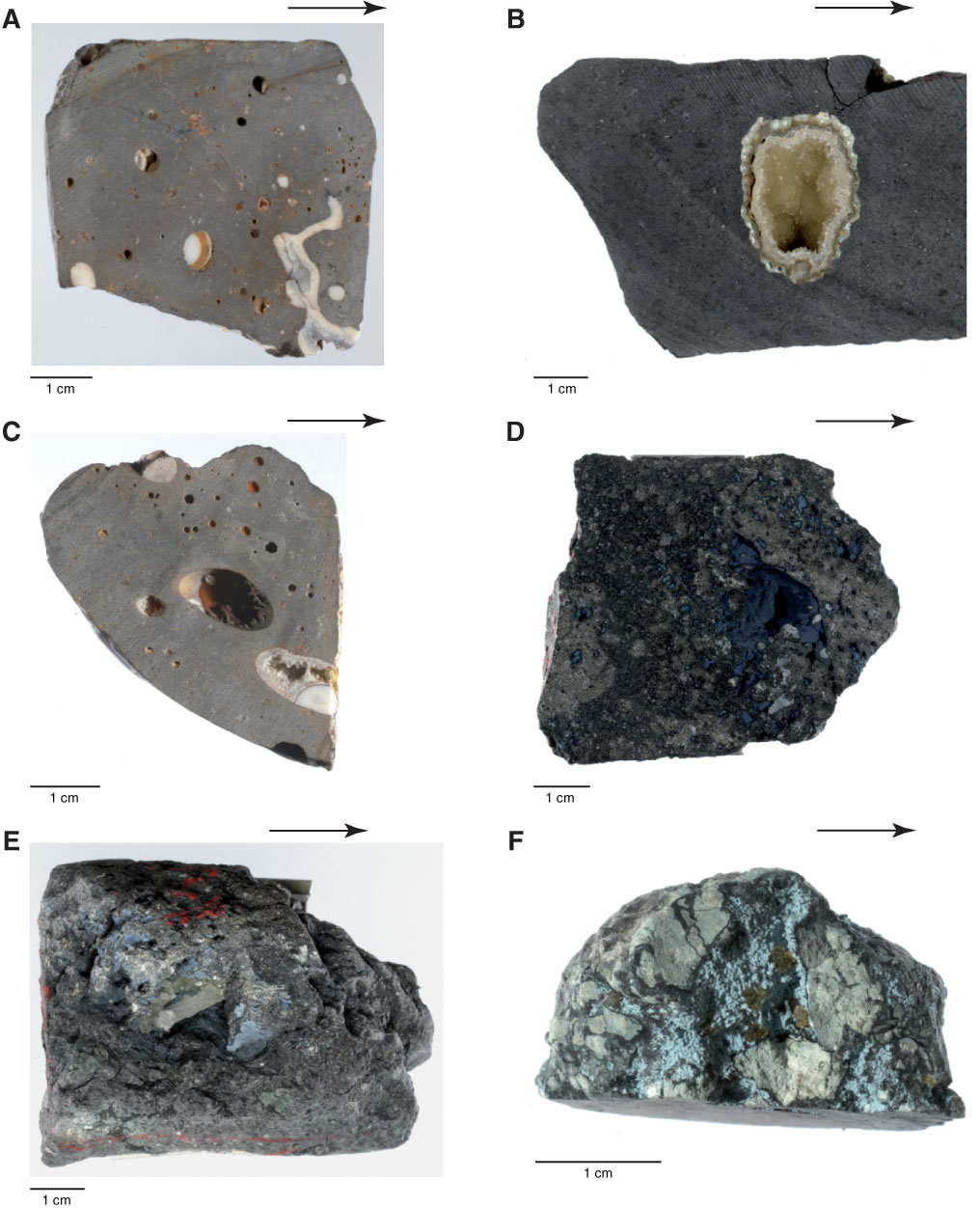
Figure F38. Close-up photographs of vesicle infilling material. Core surfaces were photographed dry. Arrows point toward top of core. A. Low- to elongate-sphericity subrounded vesicles in olivine-phyric lava flow filled with carbonate, brown clay, and minor zeolite; some vesicles have botryoidal habit (interval 330-U1372A-11R-1, 118–123 cm). B. Low- to elongate-sphericity rounded vug in aphyric lava flow filled with white clay along the margins and well-crystallized carbonate in the core (interval 330-U1372A-21R-2, 109–117 cm). C. Low- to elongate-sphericity subrounded vesicles and vugs in olivine-phyric basalt filled with well-crystallized carbonate and a minor amount of white clay along the margins, with iron hydroxides in the center of vesicles (interval 330-U1372A-11R-1, 126–130 cm). D. Low-sphericity subangular voids in hyaloclastite breccia with aphyric basalt clasts displaying blue coatings of smectite and celadonite. XRD analysis on this material indicates the possible presence of saponite, vermiculite, or natrolite (zeolite), but precise identification remains uncertain (interval 330-U1372A-18R-3, 24–30 cm). E. Well-formed crystals of zeolite associated with blue smectite (with coating of celadonite) in voids (interval 330-U1372A-18R-3, 9–17 cm). Note that the red material is from the crayon marker pencil. F. Well-formed orange to brown crystals (zeolite?) associated with light blue smectite (with coating of celadonite) in voids (interval 330-U1372A-26R-1, 44–48 cm).

Previous | Close | Next | Top of page